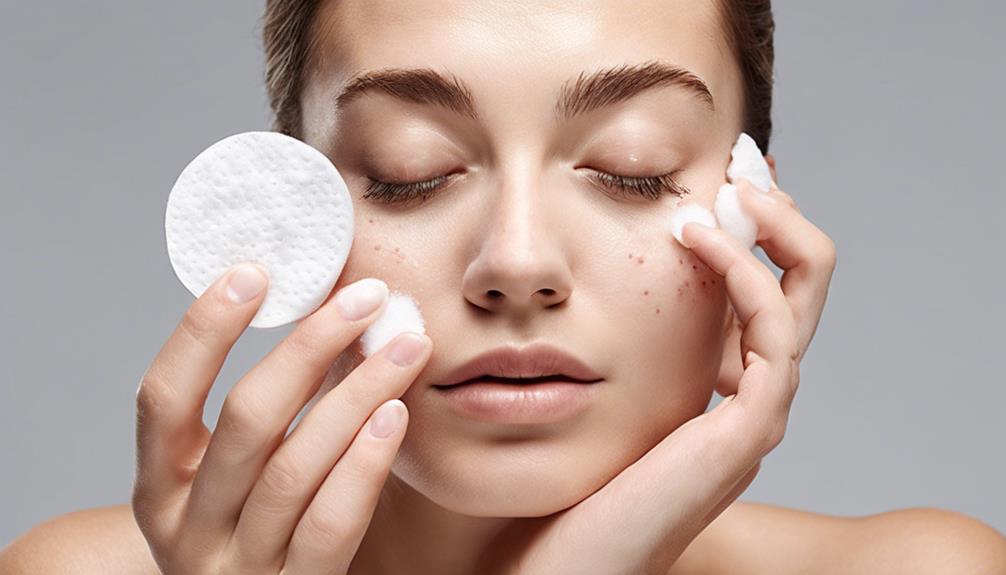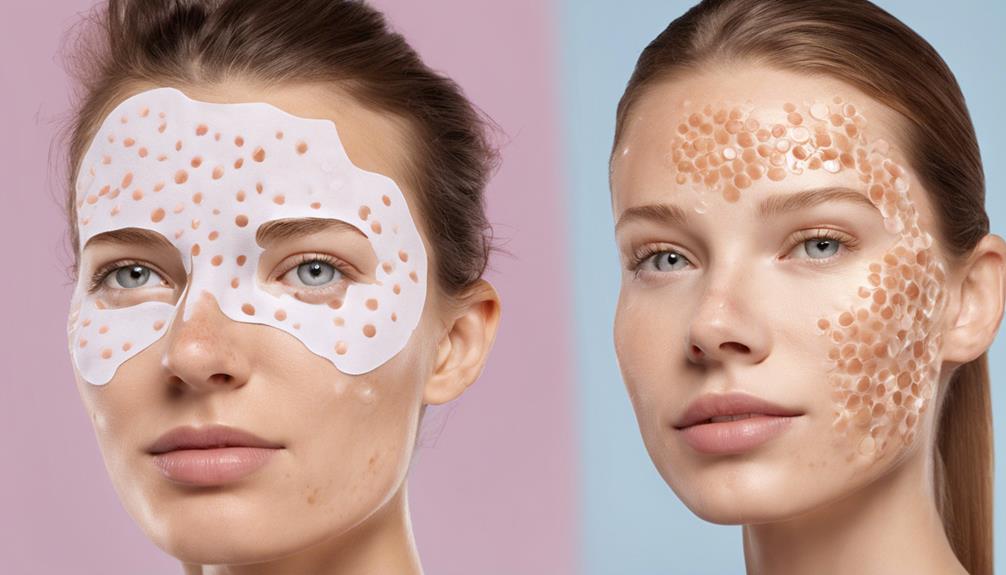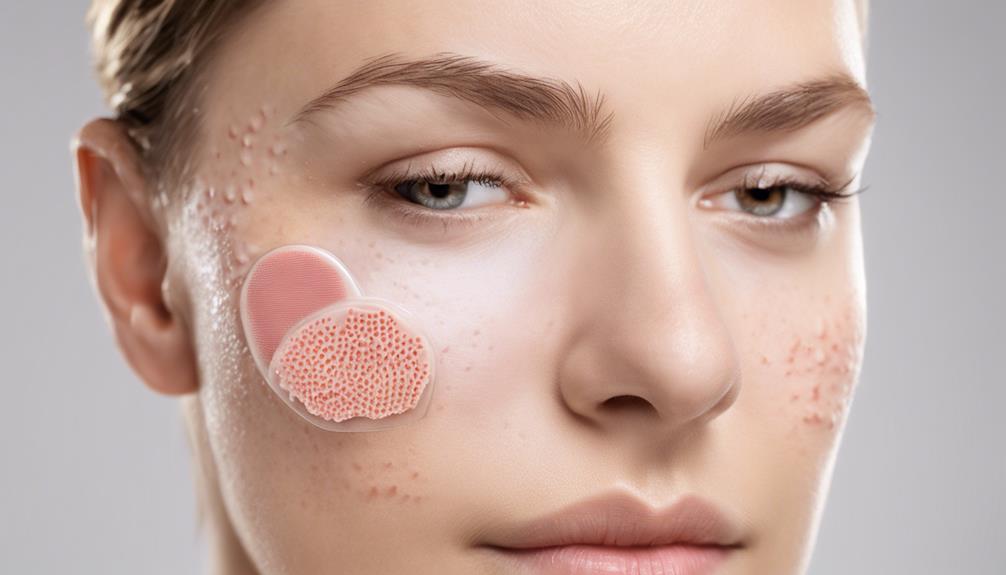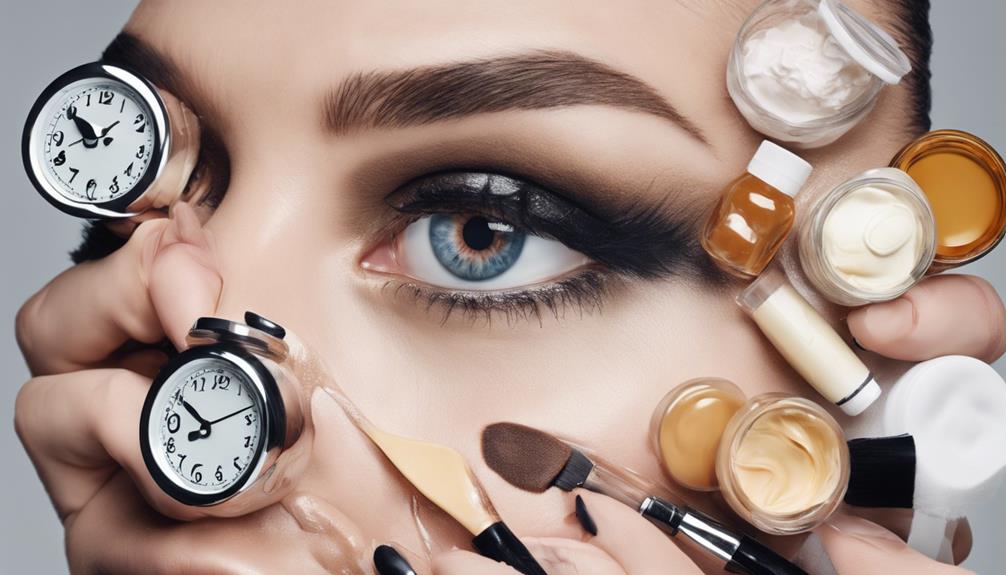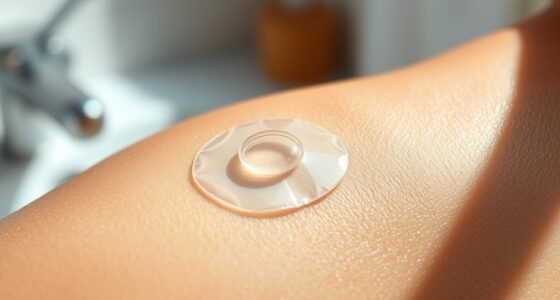When addressing a popped pimple, it’s important to cleanse the area and allow it to fully drain. Carefully apply a slightly larger patch, making sure it is secure. Press it down to ensure proper adhesion for optimal results. Replace the patch every 6-8 hours, and always apply it to clean, dry skin. Regular changes can prevent infection and facilitate quicker healing. Establishing a simple routine can lead to clearer skin.
Key Takeaways
- Cleanse and dry the popped pimple area thoroughly.
- Select a slightly larger pimple patch for proper coverage.
- Gently press the patch onto the cleaned pimple.
- Ensure secure adhesion for optimal absorption.
- Replace the patch every 6-8 hours for best results.
Preparing the Popped Pimple
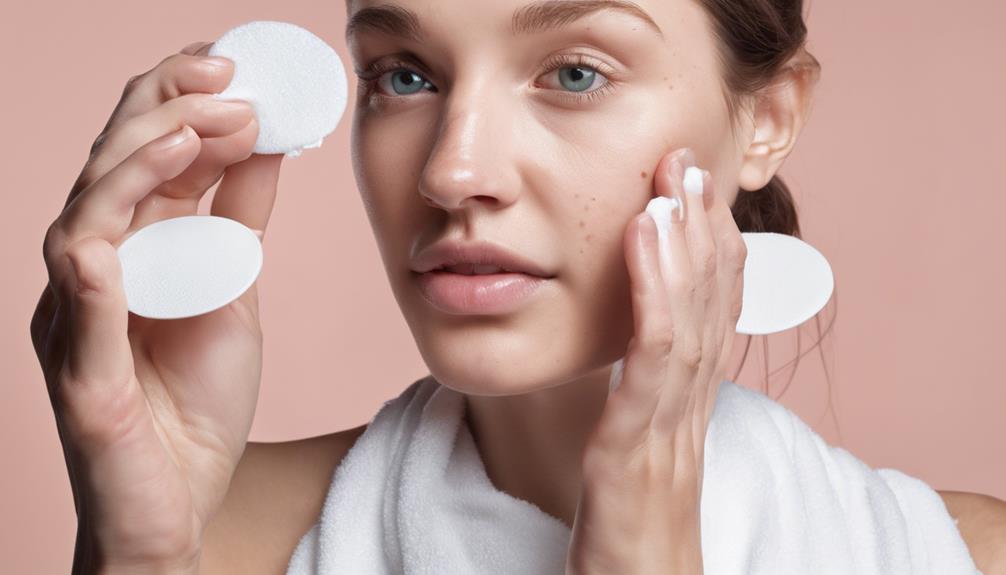
To prepare a popped pimple for a pimple patch, cleanse the surrounding area gently with a mild cleanser to remove dirt and bacteria. This step is important in ensuring that the skin is clean and ready for the hydrocolloid patch.
After cleansing, remember to pat dry the area with a clean towel to eliminate any excess moisture. It's vital to avoid squeezing the popped pimple to prevent further irritation and promote proper healing.
Wait for the pimple to fully drain and flatten before applying the pimple patch. This waiting period allows the skin to recover and maximizes the effectiveness of the patch, leading to faster healing.
Cleansing the Pimple Area
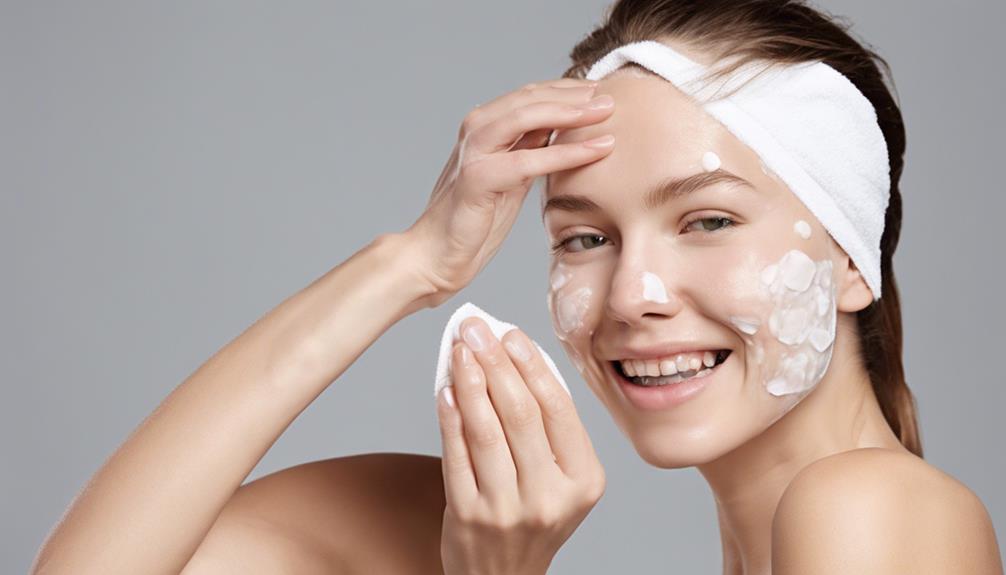
Before applying the pimple patch, gently cleanse the area surrounding the popped pimple using a mild cleanser to eliminate dirt and bacteria. It's important to be gentle and avoid harsh scrubbing to prevent further irritation.
After cleansing, pat the skin dry with a clean towel to make sure there's no moisture left on the skin. Consider using a non-alcoholic toner or witch hazel to gently tone the skin and prepare it for the pimple patch application.
It's essential to make sure the skin is completely dry as this will help the pimple patch adhere properly for effective treatment. Remember, the key to successful pimple patch application is a clean and dry skin surface.
Applying the Pimple Patch
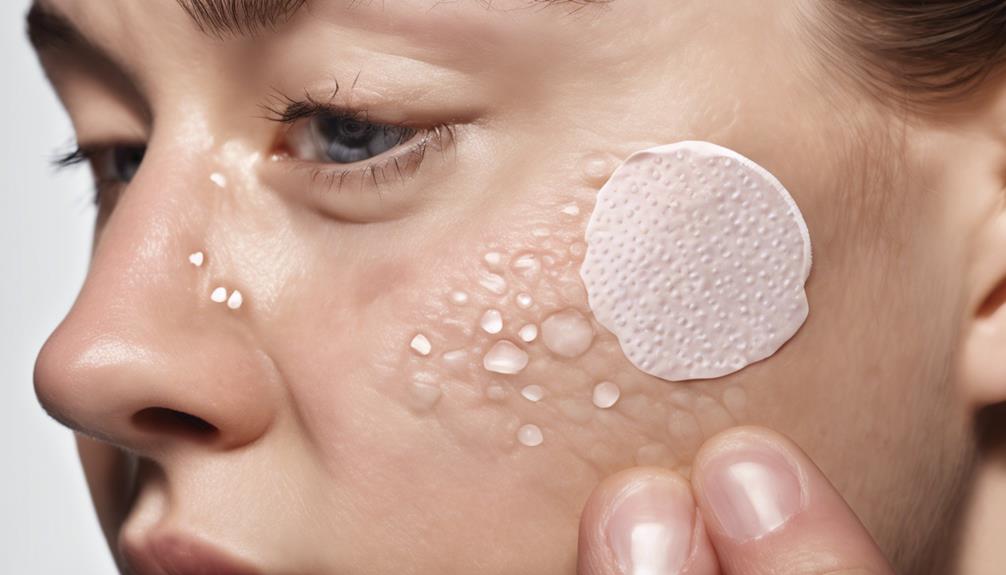
Once the pimple area has been gently cleansed and dried, carefully select a slightly larger pimple patch for full coverage and best absorption. When applying the hydrocolloid patch, it's important to press it gently onto the popped pimple, ensuring that it adheres securely to the skin. This adhesion not only helps create a seal over the area but also promotes ideal absorption of fluids, aiding in the healing process. By choosing a patch that's slightly larger than the acne spot, you guarantee that it covers the entire affected area, maximizing its effectiveness.
Leaving the pimple patch on for several hours or overnight allows it to work its magic. During this time, the patch absorbs any remaining fluids, providing a protective barrier that supports the skin's natural healing process. This overnight treatment can greatly reduce inflammation and redness, helping the popped pimple to heal faster and more effectively.
Securing the Patch in Place
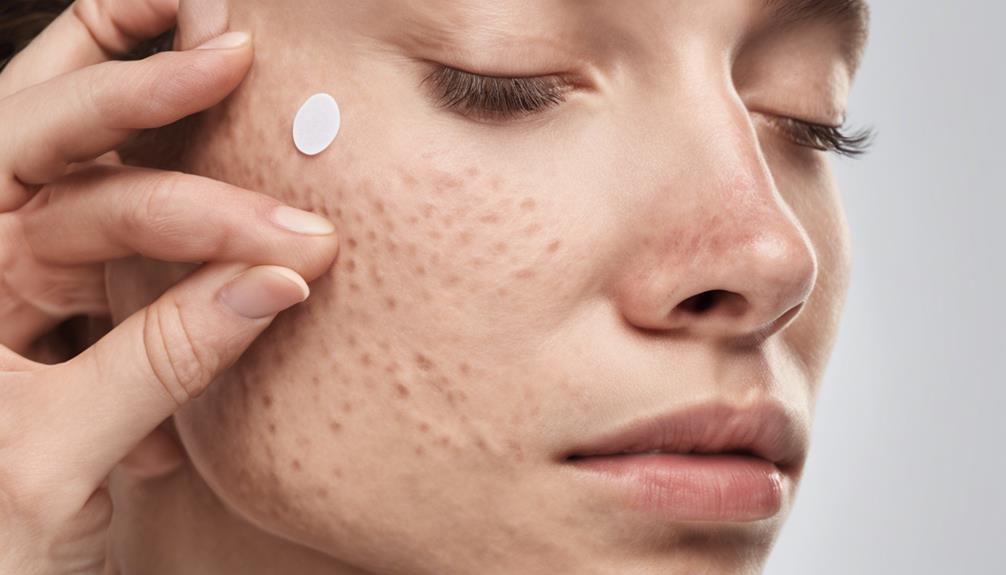
We secure the pimple patch in place by gently pressing it down over the cleaned and dried popped pimple for effective coverage. Proper adhesion is essential for the patch to work its magic on the affected area.
When applying the patch, avoid stretching the skin to prevent displacement or discomfort. Be mindful of any air bubbles or creases under the patch, ensuring it sits smoothly on the skin for best healing benefits.
The patch needs to stay in place for the recommended duration to allow it to deliver its full potential in aiding the healing process. By taking these steps to secure the pimple patch properly, you can make the most of its benefits and support the skin in recovering from the popped pimple.
Maintaining and Replacing the Patch
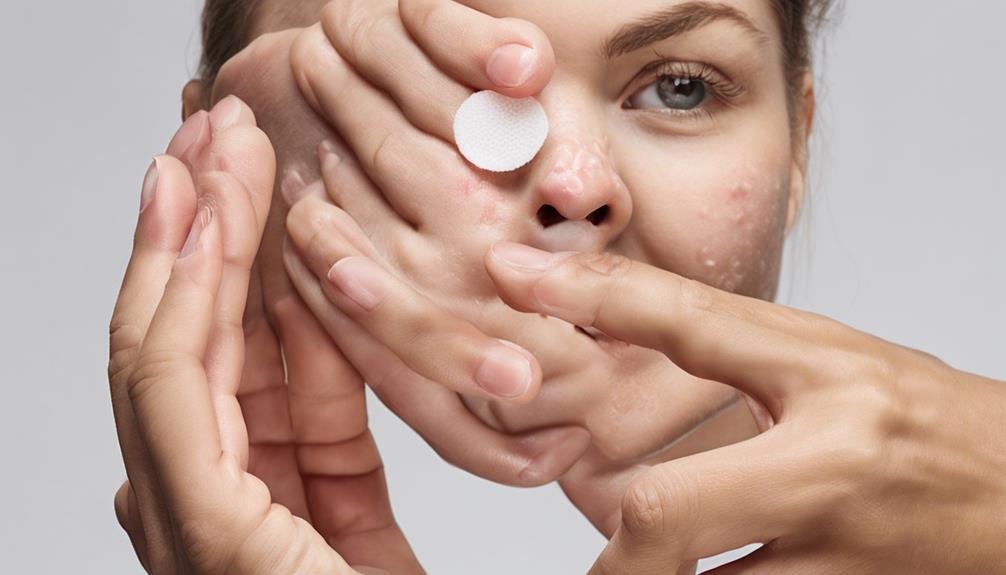
For maximum cleanliness and effectiveness, it's important to replace the pimple patch every 6-8 hours. This regular change helps maintain a clean environment and guarantees the patch can work its magic on your popped pimple effectively.
Before applying a new patch, make sure the area is clean and dry. Gently pat the skin to remove any excess moisture to prevent irritation and discomfort when replacing the patch. Avoid using harsh cleansers or rubbing the area aggressively during this process.
By consistently changing the patch, you're not only preventing infection but also promoting faster healing of the popped pimple. This simple routine can make a significant difference in the recovery process and help you achieve clearer skin sooner.
Frequently Asked Questions
Can I Put a Pimple Patch on a Fresh Pimple?
Yes, you can put a pimple patch on a fresh pimple. The patch helps absorb excess fluid, reduce redness, and promote skin recovery. It forms a barrier to protect the area from bacteria and speed up healing.
Make sure to cleanse the skin before applying for best results. Pimple patches are great for minimizing scarring and flattening the area, aiding in quicker recovery.
Can I Put Pimple Patch on Closed Pimple?
We can't recommend using a pimple patch on a closed pimple since it mightn't stick well or address the infection effectively. Closed pimples mightn't benefit as much from the patch as open or popped ones.
For best results, it's advisable to reserve pimple patches for open or popped pimples where they can absorb fluids better. Maximize the effectiveness by applying them correctly to promote faster healing.
Can I Put a Pimple Patch on a Pimple Without a Head?
Absolutely, a pimple patch can work wonders on a pimple without a head. Even though it may not draw out pus, it can still speed up the healing process by reducing inflammation and protecting the area from further irritation.
These patches create a barrier against bacteria, helping to prevent infection and minimize scarring. Applying a patch on a non-head pimple promotes skin regeneration and aids in faster recovery. The patches work by utilizing a microneedle pimple patch mechanism that delivers active ingredients directly into the skin, targeting the root cause of acne. This innovative approach not only accelerates the healing process but also significantly reduces inflammation and redness. By incorporating these patches into your skincare routine, you can achieve clearer skin more quickly and effectively.
Do Pimple Patches Pull Out Pus?
Pimple patches do pull out pus. These hydrocolloid wonders work by absorbing the pus and fluids from popped pimples. The adhesive seal they create over the pimple prevents pus spread, aiding in faster healing.
Conclusion
To sum up, properly applying a pimple patch on a popped pimple can help with healing and prevent further irritation. Remember to cleanse the area, apply the patch, and secure it in place for best results.
By following these steps, you can effectively treat the pimple and promote faster healing. Just like a bandage for a wound, a pimple patch can provide relief and protection for your skin.
